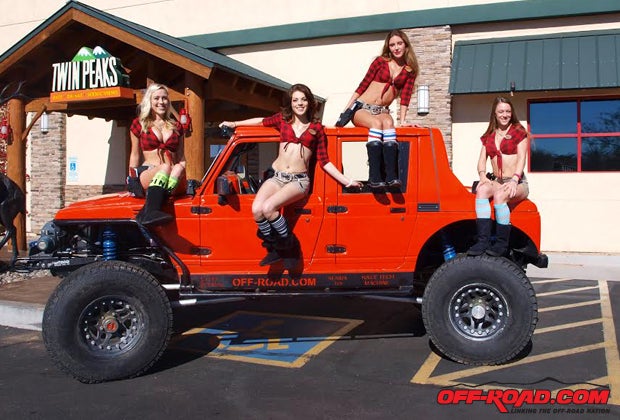
It's been some time since we last caught up with Wes Holmes and his four-door Suzuki Samurai diesel project. To refresh your memory a little bit, here's some background information:
The project featured a major change to the engine, as Wes opted to install a 1.9L VW Jetta turbo diesel engine built mildly built by Charlie at Kerma TDI into this stretched, completely custom, four-door Samurai. The first outing on the trail was pretty good, but Wes still had some bugs to be worked out.
Three years later, we checked in to see how the little car was doing. He said he no longer had the turbo on it. Instead, it now had a blower. Wes, being a tinkerer by nature, felt he could make the "little engine that could" even better! He worked extensively with Charlie to "road map" it out, and he even thought about using a blower and a turbo, but first, the blower needed to be conquered and then maybe later down the road the turbo could be added.
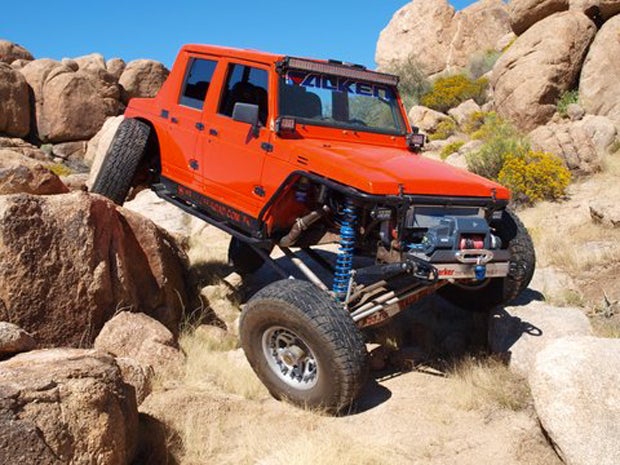
PREVIOUS PROJECT SAMURAI STORIES
Project Samurai Hits Off-Road Trail
There was a lot involved to get the vehicle where it is today. One of the things that makes this little Suzuki so great on the trail is how narrow it is. But that also creates a nightmare when it comes to fabrication. Space inside the engine compartment is extremely tight. So finding enough real estate to put a blower was a real challenge.
After doing a lot of research on a blower for this application, Wes decided to go with Magnuson. He contacted Garrett, Chief Technical Adviser for Magnuson, and found out that a blower for this particular engine was not available. Garrett was able to help determine what the best blower would be for this cubic inch motor and RPM range.
It was decided to go with Eaton's latest in its line of Twin Vortices Series superchargers. This supercharger features four-lobe, 160-degree high helix rotors providing increased airflow, with a wider operating range and higher 2.4 pressure ratio capability, while maintaining cooler operating temperatures and quieter operation. Garrett explained that they like to use the smallest supercharger possible to increase efficiency and with Holmes’ setup and the amount of boost required, this was the smallest supercharger available for his engine requirements.
A major problem: the blower is one third of the size of the TDI diesel engine! How was it going to fit? After several weeks of failed attempts to get this blower to fit, using what tools were available in an average shop, Wes contacted Darrin with LS Brackets, a shop that specializes in bracket fabrication. After talking back and forth and sending lots of photographs, Darrin told Wes to bring it out.
So, Wes loaded up the car and set out for Oklahoma. Darrin was up for the challenge. But once he saw the car and the space (or lack thereof) to work with, his first thought was that maybe he had bitten off more than
he could chew!
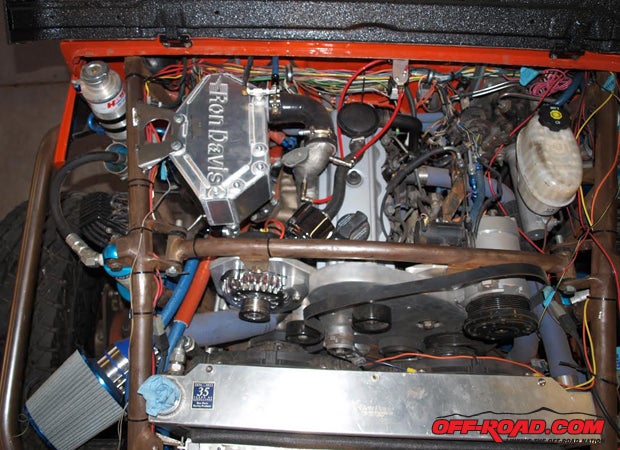
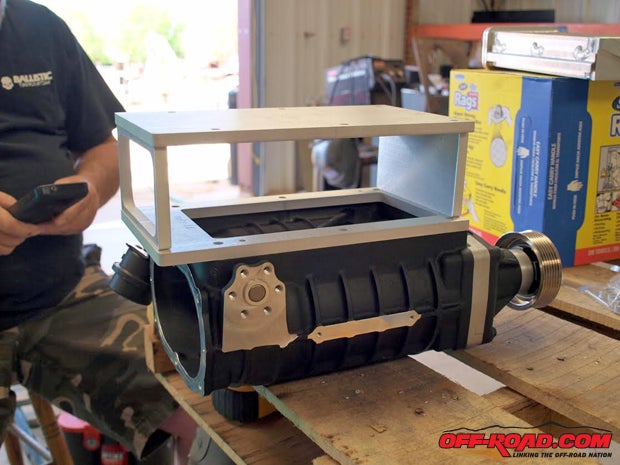
Not having one of these engines around to use for a mock-up made things extra difficult, so Wes contacted Thomas at German Auto (where he had purchased the engine) and had a motor sent to Darrin. Having a mock-up engine outside of the engine compartment made figuring out pulley alignments and bolt patterns much easier.
LS Brackets had the ingenuity needed to sort things out. Their water jet made it infinitely easier to make manifolds and brackets. The intake manifold on this project was challenging, to say the least. Wes was just about to give up when Darrin came up with the brilliant idea of cutting the stock manifold down and using it.

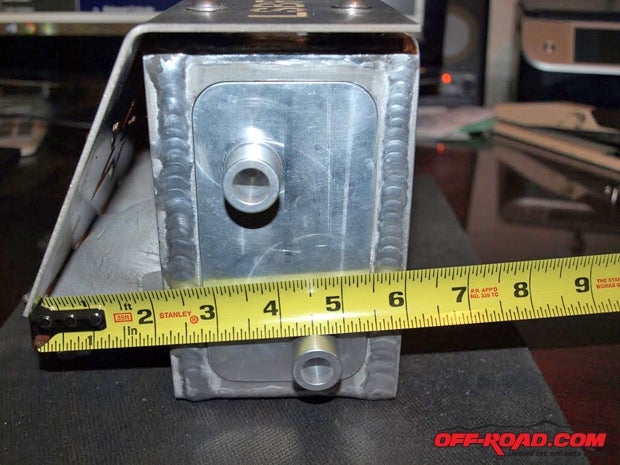
What a game changer! Even still, this was no walk in the park. As you can see in the picture, there is barely enough room between the intercooler and the manifold for a nut to tighten it to the head. Once the manifold was figured out and built, it was time to focus on the installation of the blower. The custom engine plate that was originally built and covered in a previous article had to be cut and re-worked to be able to accept the new blower. That plate was also what both the Howe Performance power steering pump and alternator mount to, so new brackets had to be made for both and then relocated. It was a tedious job to fit all the components, but LS Brackets made it all work. Everything went together perfect. A special shout out goes to Darrin at LS Brackets for not giving up on such a challenging project.
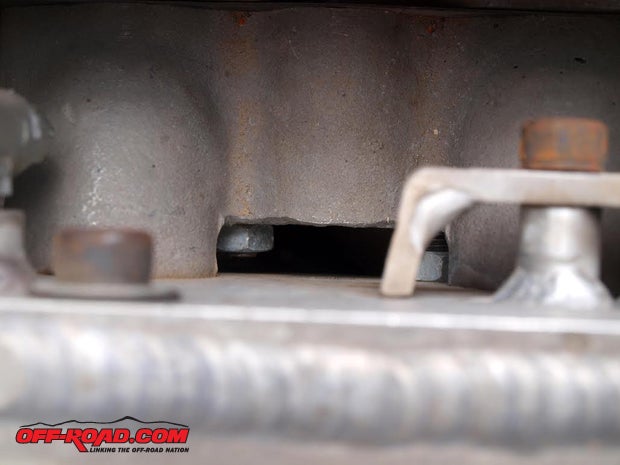
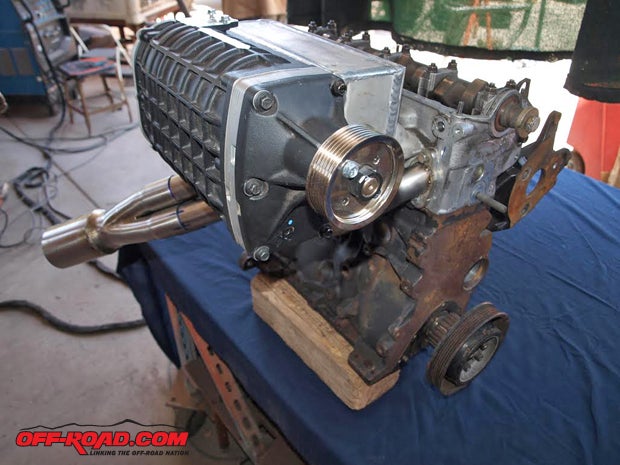
The exhaust was the next hurdle. Having never built a set of headers before, Wes hit the internet and did some research. Being somewhat intimidated by the thought of building his own headers in such a tight spot, he felt he was going to have to pay to have it done. Then he found StainlessHeaders.com and their instructional videos on YouTube a tremendous help. They completely showed how to do it, enough to where he felt confident to do this on his own.
So he got on the phone and started ordering parts. Wes was actually ordering more parts than he really needed, but with Stainless Headers expert knowledge and guidance, they gave him only the parts needed for the job. Wes' advice to anyone needing headers: don't be intimidated. Watch the videos and take your time. Make small cuts, sneak up on it, until it fits. By doing this, you shouldn't have any problems.

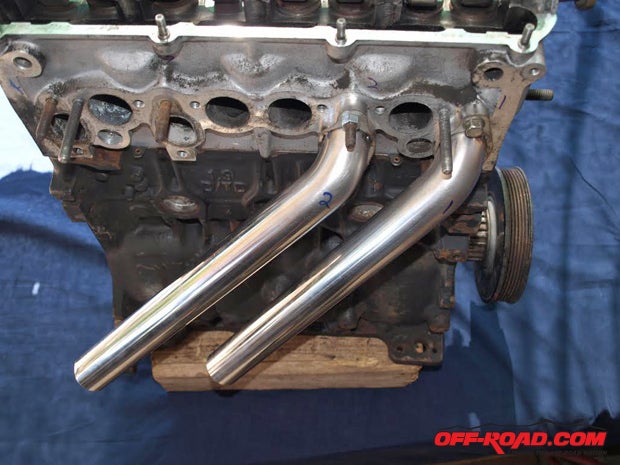
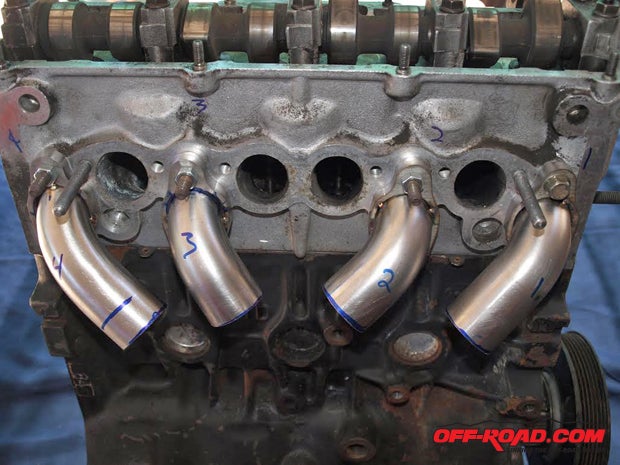

Once the headers were built and installed, Wes fired it up. Levi Cross, a big part of the assembly and tuning of this motor, hooked up the laptop to the diagnostic port and data logged all the critical parameters. The data was then sent to Charlie at Kerma TDI. Charlie replied that it needed more air. He then sent Wes a new chip for the computer and programmed to accommodate all of the changes made. The blower pulley was changed to a smaller diameter for more boost. What a difference! Whatever Charlie did, along with the pulley change, it went from 18 lbs. of boost to 22 lbs. of boost. Serious change.
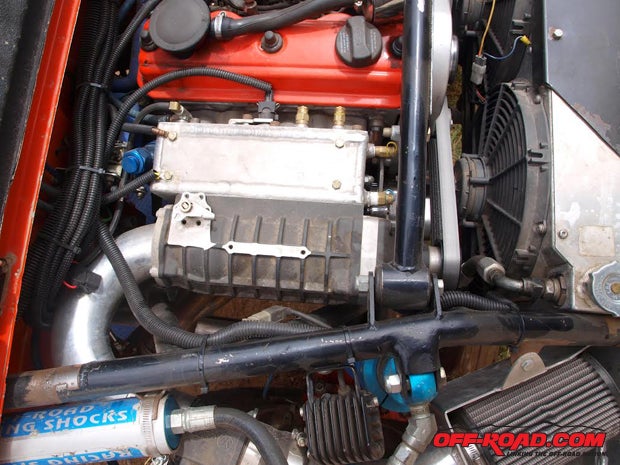
Wes, Levi, and Byron Seed from Arizona Air Balance then took the rig to the dyno. Wireless sensors, provided by Evergreen Telemetry, were hooked up to monitor and data log pressures and temperatures across the intercooler. The Eaton supercharger, from Magnuson, consistently delivered 22 PSI of boost creating 233 hp. The air-to-water intercooler, modified by LS Brackets, effectively dropped the charge air temperature by 40 degrees with only a 7 PSI pressure drop. Those numbers are quite exceptional, considering the compact size to fit all this under the original Samurai hood profile and engine bay.

A celebratory lunch was provided by the enthusiastic staff at Twin Peaks, and they really make the Samurai look good!
Wes headed for the trails after the engine work was complete. Changing the turbo out for the blower caused a loss of 28 peak HP, but the bottom end torque and drivability results were worth all of the efforts.
The engine ended up pulling like a small V8, which is quite remarkable considering we started with an under-powered 1.9L four-cylinder. All things considered, I think Wes really did build a real "Jeep Killer."
The unique obnoxious sound of this little 1.9L diesel, revving 5000 RPM as it's running down the wash, causes heads to pop up like little gophers, wondering what the hell is coming their way!
PREVIOUS PROJECT SAMURAI STORIES
Project Samurai Hits Off-Road Trail


 Your Privacy Choices
Your Privacy Choices